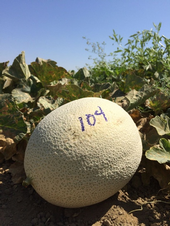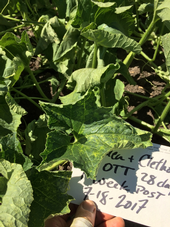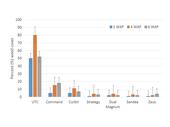- Author: C. Scott Stoddard
- Posted by: Gale Perez

In melons, as with many annual crops, weeds that emerge in the plant row are the most difficult and costly to remove. There are only a few registered herbicides for CA melon production, and efficacy can be marginal depending on weed species and method of incorporation. As a result, mechanical cultivation followed by hand weeding are the main methods of weed management.
Technology may be able to help. Automated weeders, or robotic weeders, use cameras and computers to distinguish crops from weeds. They are equipped with either spray nozzles, lasers, or cultivators to remove weeds within the crop row. Research by UC Davis weed scientist Steve Fennimore has shown that automated weeders reduced labor use in lettuce production by an...
- Author: Scott Stoddard
- Posted by: Gale Perez

The cantaloupe industry in California is in the middle of a huge paradigm shift, transitioning from classic western shipper varieties that require multiple harvests, to new Harper varieties, also known as LSL (Long Shelf Life) melons. Purported benefits include less labor at harvest and prolonged superior quality at the grocery store. Examples of Harper-type melons are the Infinite Gold, Fiji, Caribbean King and Caribbean Gold. Due to grower and buyer interest, seed companies are rapidly expanding the number of varieties with this trait.
However, LSL varieties are expensive hybrids relative to older, open pollinated cultivars, and seed costs can become a significant portion of the total cost of production, with some estimates...
- Author: Scott Stoddard
- Posted by: Gale Perez

There are a limited number of herbicides registered for melon production in California and Arizona, two of the major production areas for cantaloupes and honeydews. Shallow cultivation and nonselective herbicides with no soil activity can be effective if used after bed formation and before planting. Both contact (paraquat [Gramoxone]) and systemic (glyphosate [Roundup]) herbicides can be used. Curbit (ethafluralin) can be effective, but should be used with caution, as crop injury will occur if it is concentrated around the germinating melon seed by water or cultivation.
While used mainly for post emergence nutsedge control, halosulfuron (Sandea) is currently registered on melons for both pre and post emergence broadleaf weed...
- Author: Lynn M. Sosnoskie

Irrigation is crucial for the production of melons in California. It facilitates seed germination, it is essential for crop growth and fruit production, and, for growers that apply pre-emergence herbicides, it is necessary for product activation.
Pre-plant irrigation (pre-irrigation) is used to develop an optimal planting bed for the crop, however, it can also stimulate weed seed germination. Knowing this, growers must be prepared to use pre-emergence (i.e. soil-applied, residual herbicides) or post-emergence (i.e. flaming, or foliar-applied herbicides) to reduce crop-weed competition. Early weed control is important; to maximize crop yields, young melons should remain weed-free for up to eight...


